The Accidental Community Science of Security Cameras
How security cameras help document wildlife in backyards.
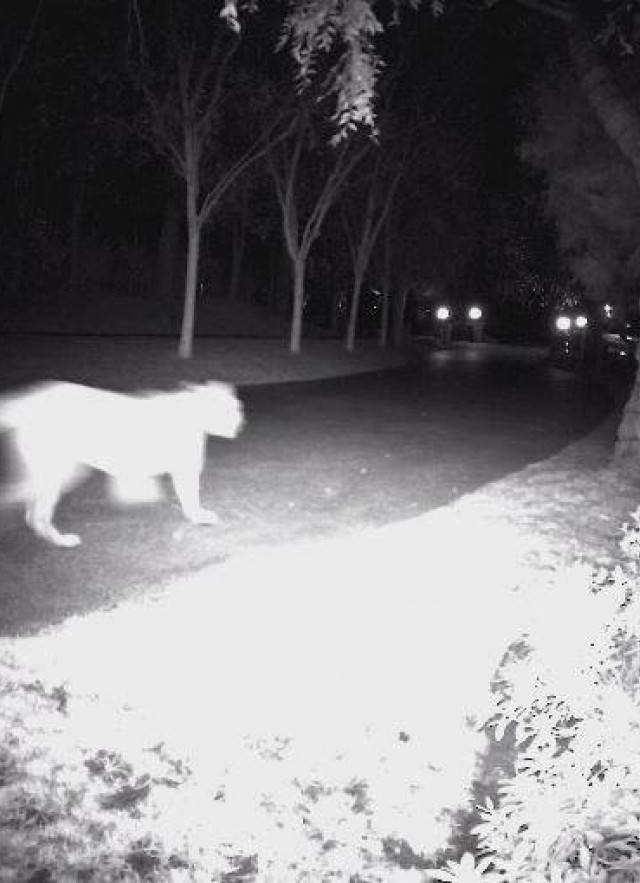
People usually purchase home security cameras to document human intruders and to keep their families and property secure, not to document wildlife in their backyard, so I would never have guessed that the biggest local puma story since the discovery of P-22 would be captured accidentally in 2014 by a home security camera near Beverly Hills.
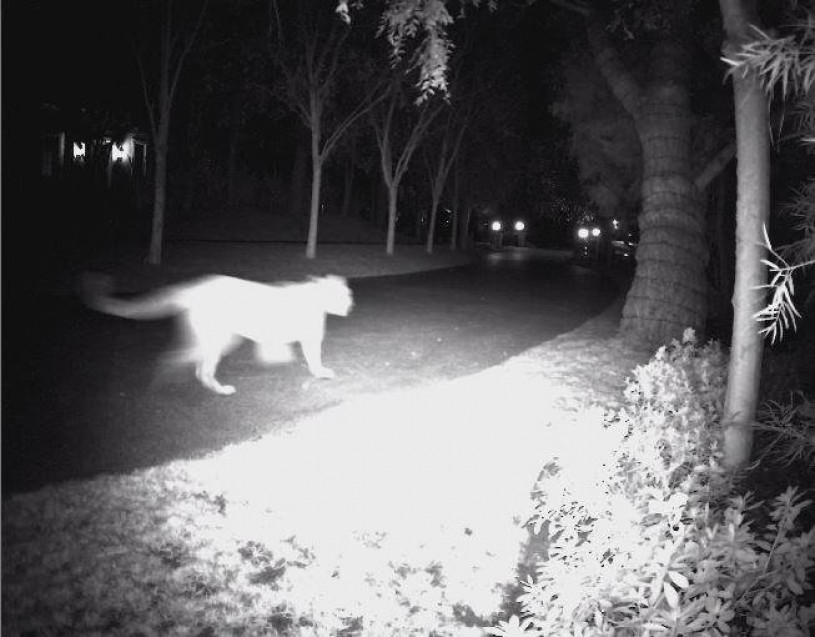
This photo of the mystery puma was captured on a security camera by musician Chris Stills (son of Stephen Stills of Crosby, Stills & Nash). Stills tweeted the photo, which was how I saw it. The photo inspired me to put some camera traps (motion-activated cameras designed to document wildlife) out in Franklin Canyon, the closest open space to the original security camera location. After a year of camera trapping, I eventually got a couple of puma photos. I would never have considered surveying for a puma in the isolated Franklin Canyon if it hadn't been for that original surprising security camera footage.
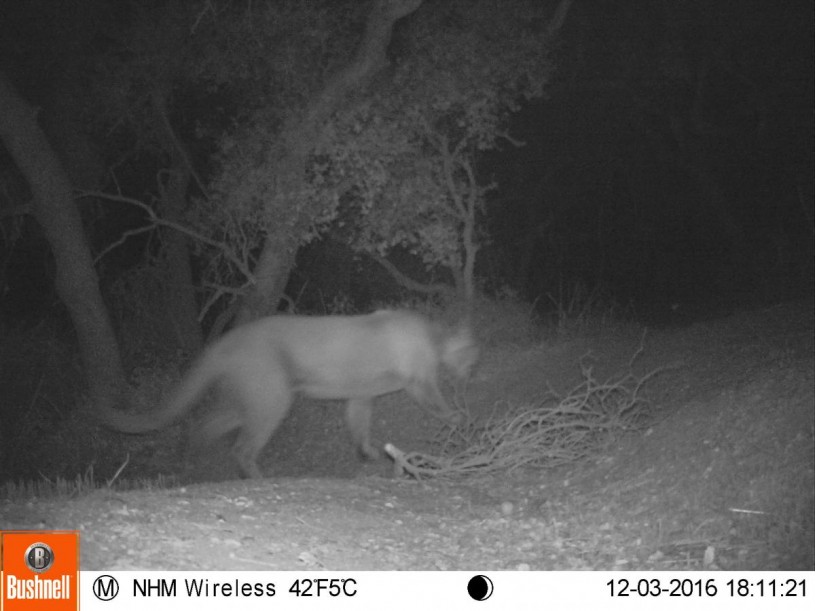
Since then, a puma was also documented by a backyard camera trap in Beverly Hills in August 2017. After looking more closely at the footage (specifically, underneath the tail), I think the individual seems to be a male! You can kind of see a dark marking under the tail (at 0:02) that only males produce due to scent marking, suggesting that this individual is a male.
Camera trap footage of unmarked (likely male) puma in Beverly Hills backyard.
A few months later a puma was famously documented further east in Laurel Canyon by a camera trap owned by CLAW (Citizens for Los Angeles Wildlife). Due to the scarcity of identifiable markings on adult pumas, it is impossible to know if these have all been the same puma. In my opinion, it is very possible that this has been the same puma observed for almost three years, due to the fact that the 405 freeway is such a formidable barrier and because there are so few pumas in this region due to the lack of available territory.
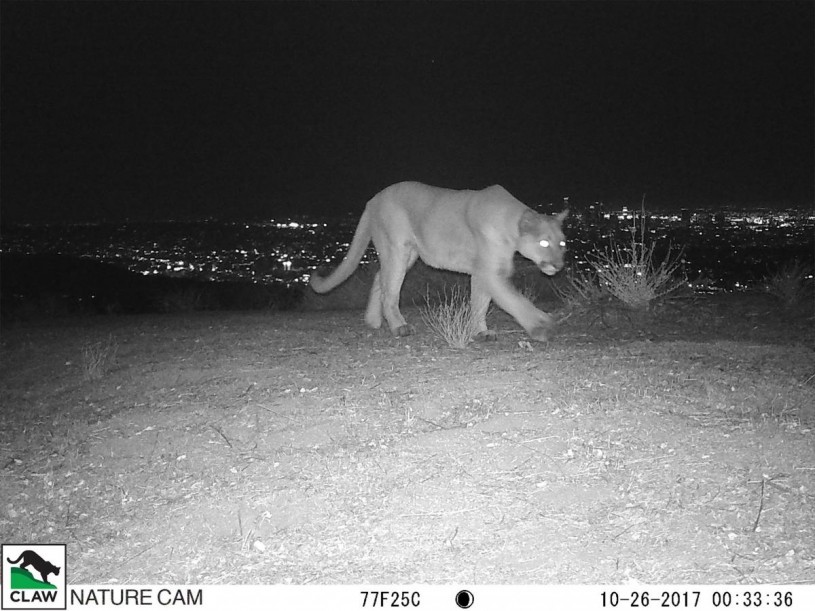
This is important because it would be the only other mountain lion known to successfully cross the 405, besides our famous P-22. (And P-22 then crossed the 101 to reach Griffith Park, where he has lived since February 2012.) This photo of the puma in Laurel Canyon is significant because it shows that the puma is now even closer to the 101 freeway, the last remaining barrier between it and P-22’s territory.
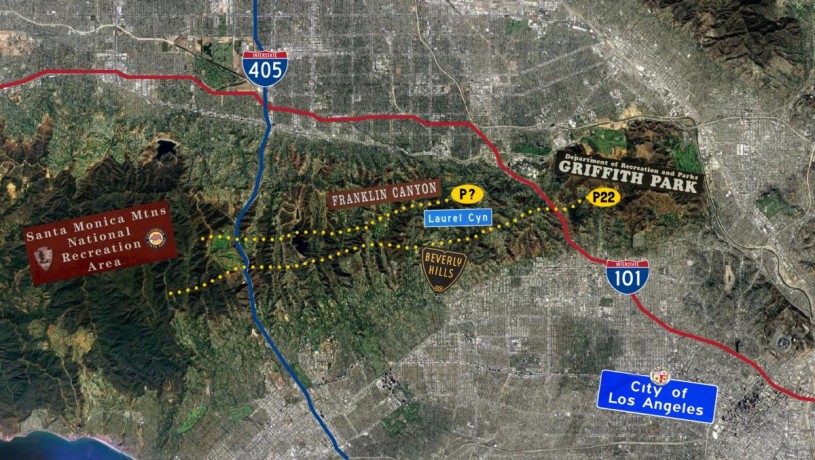
Would these pumas even be heading east if there was better connectivity between the Santa Monica Mountains and the Santa Susana Mountains? What will happen if this new puma enters P-22’s territory? Will it smell P-22’s scent markings and simply move on to avoid trouble with another territorial puma, or will it decide to stay? If it is male, would he challenge P-22 for ownership of Griffith Park? If female, will she like him, and will he like her enough to mate, despite having less than enough space for two pumas? Will P-22 see her as a competitor and attack her? If they successfully breed, will the kittens survive to adulthood? These have all been burning questions in my mind. Meanwhile, the latest update is that I encountered what I thought was his/her scat in Franklin Canyon on November 5th. Hopefully this photo of me collecting carnivore scat will hold you over as we wait for this story to develop. UPDATE: The National Park Service and I took a more detailed look at the scat and after further inspection, the scat is likely a massive coyote scat.
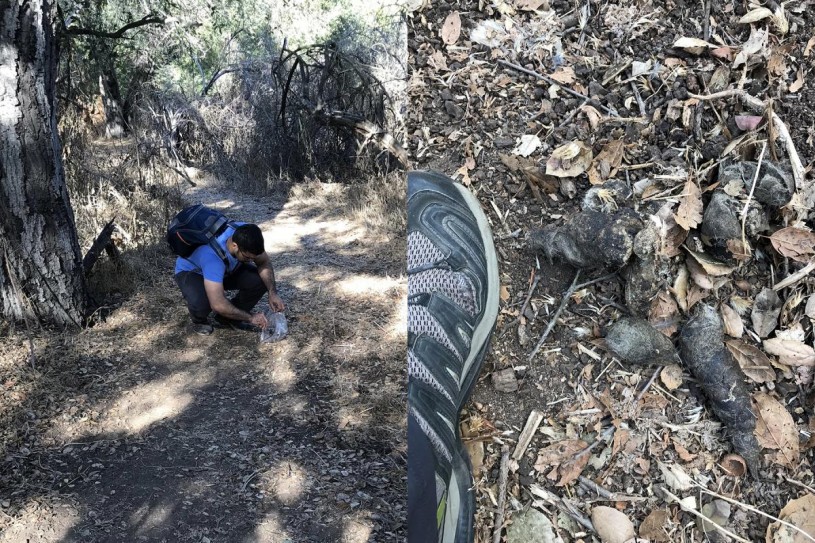
Surprisingly, Chris Stills’s discovery isn’t an isolated incident. As security cameras become more popular and accessible, there has been an increase in scientific contributions from the accidental documentation of wildlife. For example, residents who live on the edge of Griffith Park recently documented P-22 on their security camera and thought it was cool but didn’t see it as anything more than a fun story to post on Facebook. Thanks to the power of social media, the video was eventually shared with someone who knew me. I shared it with biologists at the National Park Service who track P-22 via a GPS collar, and they were then able to use the date, time, and location information from the security footage as a useful data point. Check out this must-see footage of P-22 moving through someone’s backyard, especially the video of him leaping over a fence!
Security camera footage of P-22. Video courtesy of Sheryl Hellard.
Security camera footage of P-22. Video courtesy of TJ Escott.
Security camera footage of P-22. Video courtesy of TJ Escott.
Pumas are wide-ranging animals that can cover a lot of distance in a short amount of time. P-22’s GPS collar only downloads 3 points during daylight hours (when he is usually resting or hiding in the same spot) and 6 points, every 2 hours, at night when he is more active. But what happens at night between each GPS collar download? This is where security cameras have occasionally filled in some gaps. According to the National Park Service, 94% of P-22’s GPS points are in natural areas and only 6% in urban habitat (residential areas). Therefore, when he is photographed by a security camera, it is likely that he is on his way between one natural patch of habitat and another.
To our benefit, security cameras of all types are becoming increasingly popular in Los Angeles. One teacher who was already curious about wildlife didn’t think of her entertaining doorbell camera footage of a gray fox as a data point. When she shared it with NHM’s community science staff, we showed her how pictures with date, time, and location information are awesome data points! The footage from her San Fernando Valley residence was then added to our L.A. Nature Map, which maps L.A. biodiversity in both urban and rural ecosystems.
Security camera footage of gray fox. Video courtesy of Marla Axelrode
I hope that more homeowners will be so inspired by these accidental contributions to science that they become more invested in urban wildlife conservation and research. One way to do that is by investing in a backyard camera trap that is positioned in a location and angle that will be even more successful at capturing wildlife activity. Some local residents who are participating in our SuperProject have agreed to not only host a camera trap in their yards but to also look for wildlife once a month and document wildlife with their smartphones via the iNaturalist app.
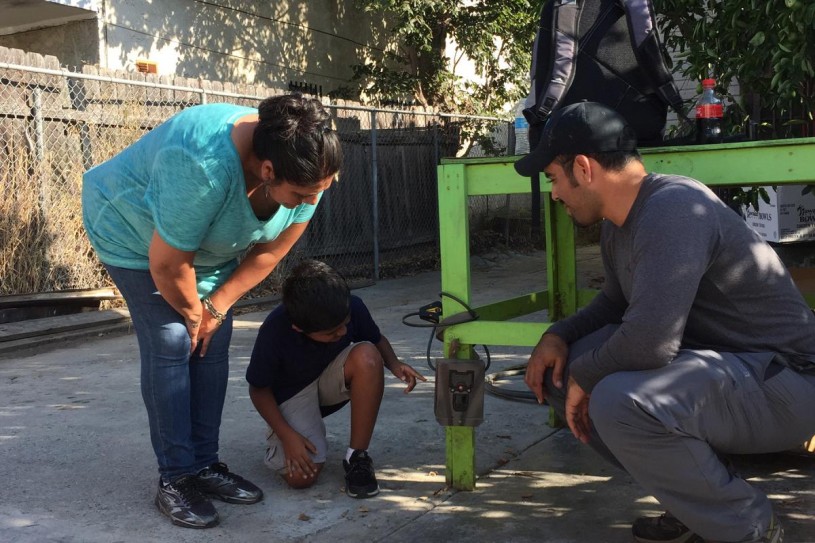
The increasing accessibility of smartphone technology, user-friendly apps, and cheap backyard camera traps has the potential to take scientific literacy a big leap forward. This will empower historically underserved communities to collect data and recognize that science and videos of mountain lions are just as relevant to them as they are to people who live within mountain lion territories.